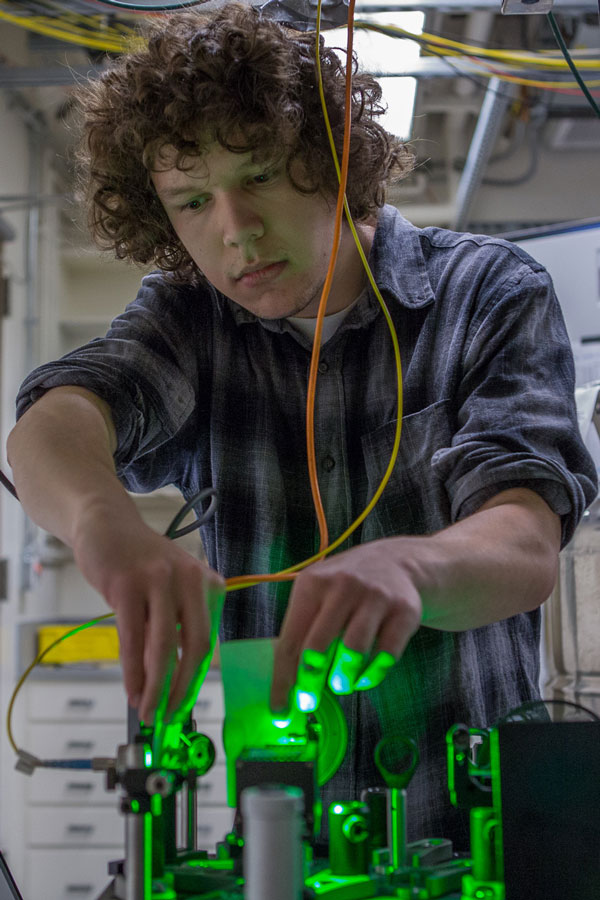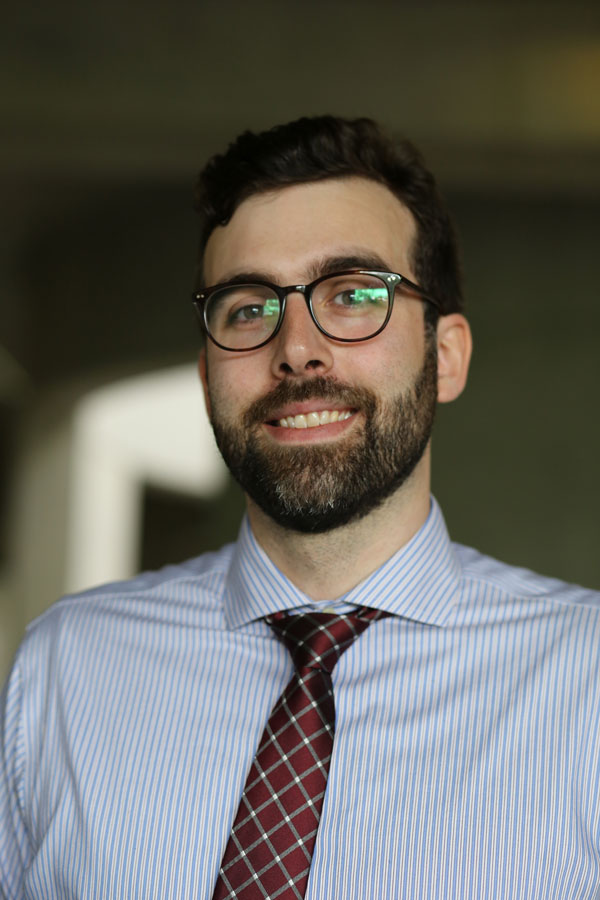Sandia will welcome two new Truman Fellows in October. Pauli Kehayias and Thomas O’Connor will join the Labs for the next three years to apply breakthroughs they have made in their respective fields to Sandia applications. They join six other Truman Fellows now conducting research at the Labs.
Lab News spoke to both incoming fellows about how they plan to fold their innovations into Sandia’s R&D program.
Since 2004, Sandia’s Harry S. Truman Fellowship in National Security Science and Engineering has sponsored high-risk, potentially high-value R&D through the Laboratory Directed Research and Development program. Candidates propose bold, cutting-edge research with a strong tie to Sandia’s mission and must earn the endorsement of a selection committee of senior scientists, their future peers and Sandia’s Chief Research Officer.
“Those who stay at Sandia after their three-year fellowships end become leaders of the next generation of Sandians,” said Cindy Phillips, chair of the Truman selection committee. “Those who go to academia become ambassadors for Sandia and frequently send their students to Sandia as interns, postdocs or staff members.”
Of the 28 previous honorees, 17 subsequently joined the technical staff, and nine are still employed by Sandia. Applications for FY2020 fellowships will be accepted until Nov. 1, 2018.
Pauli Kehayias: ancient magnet hunter
Coming from the Harvard-Smithsonian Center for Astrophysics, Pauli Kehayias has developed a new kind of delicate magnetic sensor for paleomagnetism, the study of ancient-Earth magnetic fields. Now he is going to apply the same principles to imaging microwave fields in microelectronics at Sandia.
“The committee was impressed with his relaxed mastery of solid-state physics and his combination of deep theoretical understanding with novel experiments,” Cindy said.
He will be working with Peter Schwindt and Shanalyn Kemme in microsystems research.
How are you using diamonds as a new kind of sensor?
At Harvard, I’m using nitrogen vacancy centers in diamond to do magnetic microscopy of rock samples and meteorites. A nitrogen-vacancy center is one of many naturally occurring defects in diamond, in which a single nitrogen atom replaces a carbon next to a vacancy — a missing carbon atom. Other common defects may make diamonds yellow or blue. NV centers fluoresce when illuminated and are also paramagnetic, which is why we can use them to sense magnetic fields.

We can put NV centers very close (about five nanometers) to the diamond surface. Since you can put the NV centers as close as a few nanometers away from the magnetic sample you want to sense, the field is much stronger and the spatial resolution is better than with other methods. With micron spatial resolution, we’re able to isolate the magnetic fields from the best magnetic recorders to make conclusions about the conditions of the early Earth and solar system.
How will you advance your work with sensors at Sandia?
I will continue developing better NV diamond microscopes and applying NV sensing to novel applications. This includes imaging electronics, materials and sensing in extreme environments. Paleomagnetism labs around the world are excited to adopt NV sensing for their experiments, and I hope to replicate this excitement for other areas of science and engineering.
Is it easy to adapt your technology from studying rocks to electronics?
With an NV magnetic imager, like for paleomagnetism, you apply a nominally uniform microwave field to the nitrogen vacancies to measure the magnetic field across a sample. For comparison, with an NV microwave imager you instead apply a nominally uniform magnetic field and measure the microwave field across a circuit. There’s great similarity in the methods but for different applications. Fortunately, I can exploit many of the techniques from my previous work on rock magnetic imaging to imaging microwave fields.
What attracted you to Sandia?
I learned about the Truman Fellowship from my collaborator at the University of New Mexico, and visited the lab once before I applied. The environment is a great fit, and I hope that I can collaborate with Sandia experts on great interdisciplinary projects.
Thomas O’Connor: goopy polymer tamer
Thomas O’Connor received his Ph.D. in physics from Johns Hopkins University last spring, where he distinguished himself by solving a decades-old riddle of why polyethylene is not as strong as it theoretically should be. He brings his wisdom about the material properties of polymers to Sandia to develop molecular models that improve industrial processes for additive manufacturing.
“Thomas impressed the committee with his strong commitment to and passion for national security and his exceptional ability to explain his complex work to non-experts,” Cindy said.
He will work with nanostructure physics researchers Gary Grest, Mark Stevens and Ryan Wixom.
What’s the problem you’re attempting to solve for the plastics industry?
Polymer materials, or plastics, show up everywhere in modern life. Most applications require rapidly stretching and molding molten polymers in the liquid state. However, controlling the flow of polymers is very challenging because they are complex fluids. A

common example of a complex fluid is ketchup. It resists flow while sitting still and will stay inside its bottle even if you turn it upside down. However, if you shake or tap the bottle, it will start to flow, sometimes much faster than you want! Polymer fluids can exhibit similar and often more complicated behaviors.
Understanding how to predict or engineer these properties is very important for designing effective industrial processing methods. The same frustration you might face trying to get the right amount of ketchup onto a burger also plagues manufacturers trying to control the deformation and flow of polymers.
Where does your modeling expertise fit in?
My expertise is in modeling polymer materials and liquids at the molecular scale and using this information to develop and improve models for fluid flow at larger scales. We still have many important and unanswered questions about how polymers behave at the molecular scale, particularly when they are mixed with additives like nanoparticles or solvents.
Your emphasis at Sandia is additive manufacturing. What drew you to that?
The emergence of additive manufacturing is a fortuitous event for a polymer physicist like me. AM is an opportunity for me to apply my expertise to progress our basic understanding of polymer fluids, as well as serve the strategic interests of the U.S. government. It is also exciting to work on the science of a transformative technology like AM, as it is rapidly expanding and capturing the public interest.
How does working at Sandia fit into your family tradition of public service?
Both my parents, my grandparents and my uncle have all served as U.S. Navy officers. My father and uncle are still active duty.
As a physicist doing basic research, I was attracted to Sandia because of its reputation for valuing research and engaging with the academic community.
I think maintaining this connection is strategically essential to ensure Sandia keeps pace with cutting edge techniques and can achieve research goals as efficiently as possible.
The Truman Fellowship is a real privilege, and I am grateful for the opportunity to use my expertise to both strengthen Sandia’s external relationships and progress DOE’s research agenda.